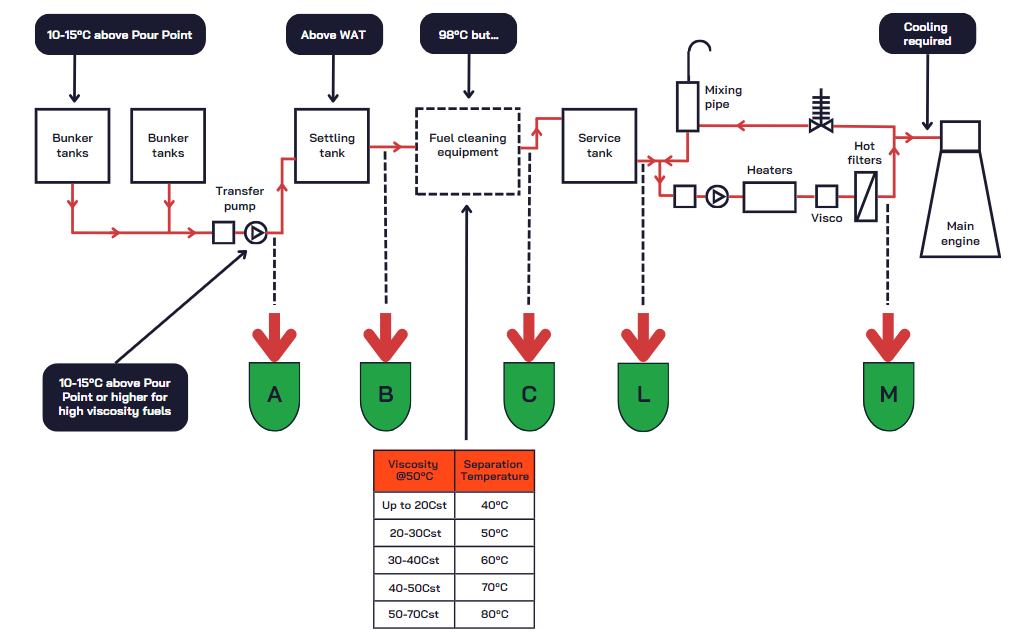VLSFO Fuel Management
Article by Wolf Rehder, VPS Area Manager Germany
Why correct VLSFO temperature management is required to protect your assets
With the introduction of the IMO sulphur cap as of 1 January 2020, correct fuel management increased in importance. One of the challenges faced on-board is finding the optimal fuel temperature throughout the fuel system.
We have seen that Very Low Sulphur Fuel Oil (VLSFO) can quickly destabilise once on-board the ship, with some of these fuels having a shelf life of less than three months. This process of destabilisation accelerates when the fuel is heated. As a result, excessive sludging can be experienced, leading to issues such as clogging filters and separators.
VLSFOs are by nature, more paraffinic than “conventional” High Sulphur Fuel Oils. Should the fuel not be kept at a sufficient temperature, then wax formation maybe the resulting outcome, affecting separators operation, as well as clogging fuel systems including filters. The historical advice of storing fuels at 10°C above the pour point can sometimes be misleading with regard to VLSFOs, as wax formation may start at temperatures higher than the pour point. VPS global statistics on Very Low Sulphur Fuel Oil indicates that Wax Appearance Temperature (WAT) is about 20°C above Pour Point.
Maintaining settling tank temperatures below the WAT can lead to wax precipitation in the tanks which could then block the suction line and could also reduce the heating efficiency if the wax covers the heating coils. Therefore, knowing the exact WAT is essential to ensure correct fuel management.
WAT test method that was introduced by VPS in 2019, has helped numerous ship owners and operators to overcome this problem.
Keep fuel temperature as low as possible - but as high as necessary
Fuel temperature must be managed on a case-by-case basis and is a fine balance between the viscosity and WAT. Heating the fuel in the storage tanks for an extended period is not recommended as it would significantly deteriorate the condition of the fuel and fasten the ageing process.
However, heating the fuel to achieve the appropriate purification temperature and injection viscosity cannot be avoided, since this is for a relatively short period assuming the fuel leaving the purifier is immediately consumed, the damage is limited.
In the past a separation temperature of 98°C was carved in stone. With the onset of VLSFOs since 2020, we have seen a significant reduction in viscosity which means lower separating temperatures at the purifiers.

As shown in the above figure 1, we can see the separator manufacturers generally recommend the storage and separation temperatures based on the viscosity of the fuel. Where the recommended separation temperature is below the WAT, this results in separator sludging or complete blockage in the worst case.
This problem can be more severe in cases where cat-fines are high and viscosity is low. The problem of heating a low viscosity fuel above the WAT, is that the viscosity becomes so low that the fuel booster pumps of the vessel cannot produce sufficient pressure, introducing leakages and can potentially leading to vapour lock. When a vessel cannot increase the temperature above the WAT, due to operational restrictions, the fuel is essentially unusable.
For this reason understanding the correct WAT is critical when using VLSFO.
Contact
To find out more about how we can help you with your fuel management, please contact Wolf Rehder at: wolf.rehder@vpsveritas.com
 Search
Search
 Customer
Customer